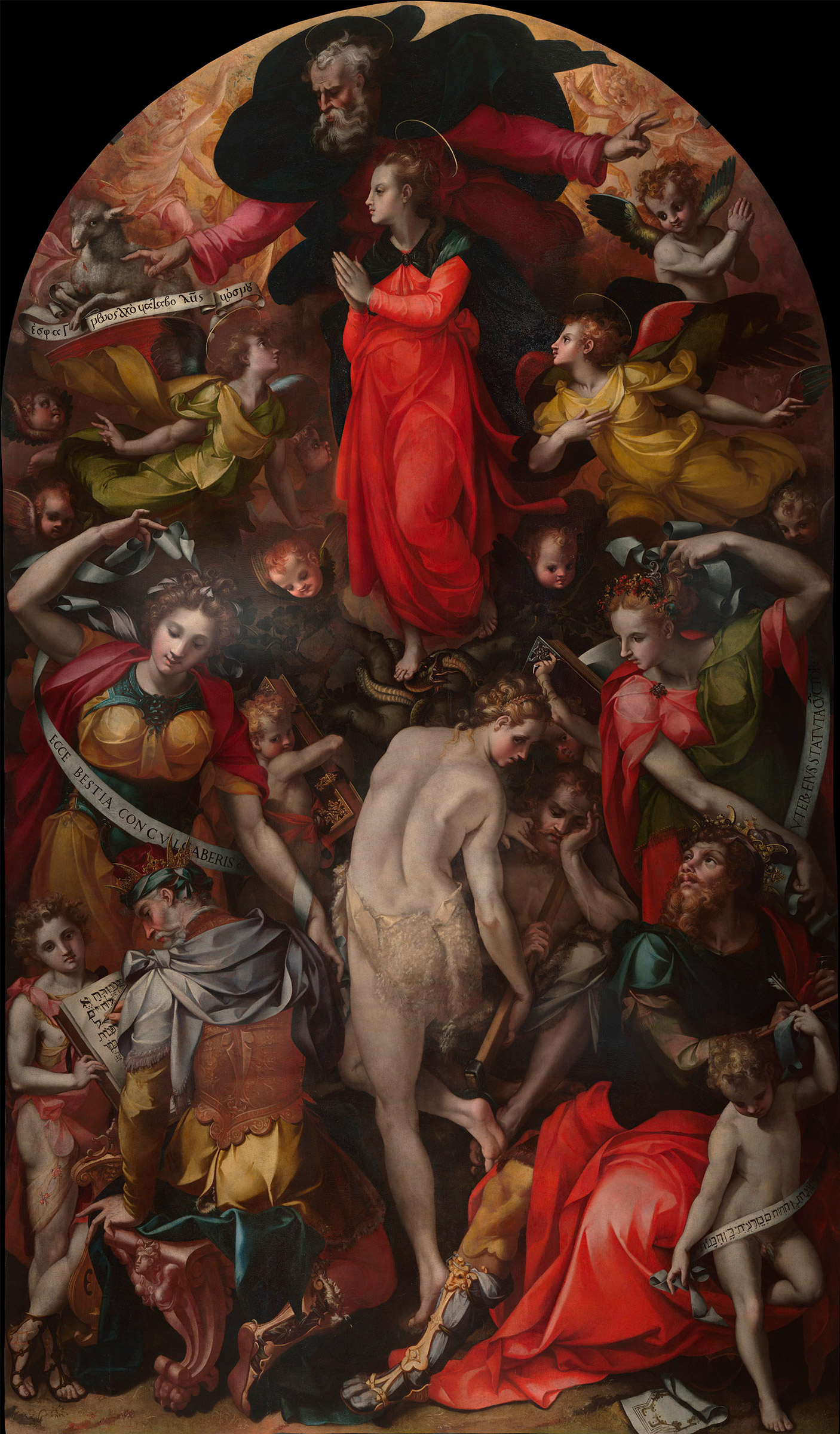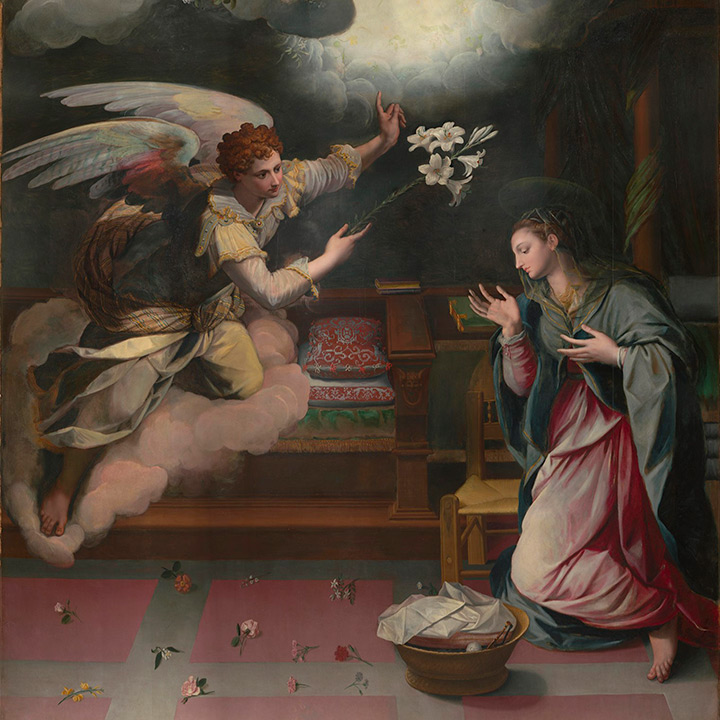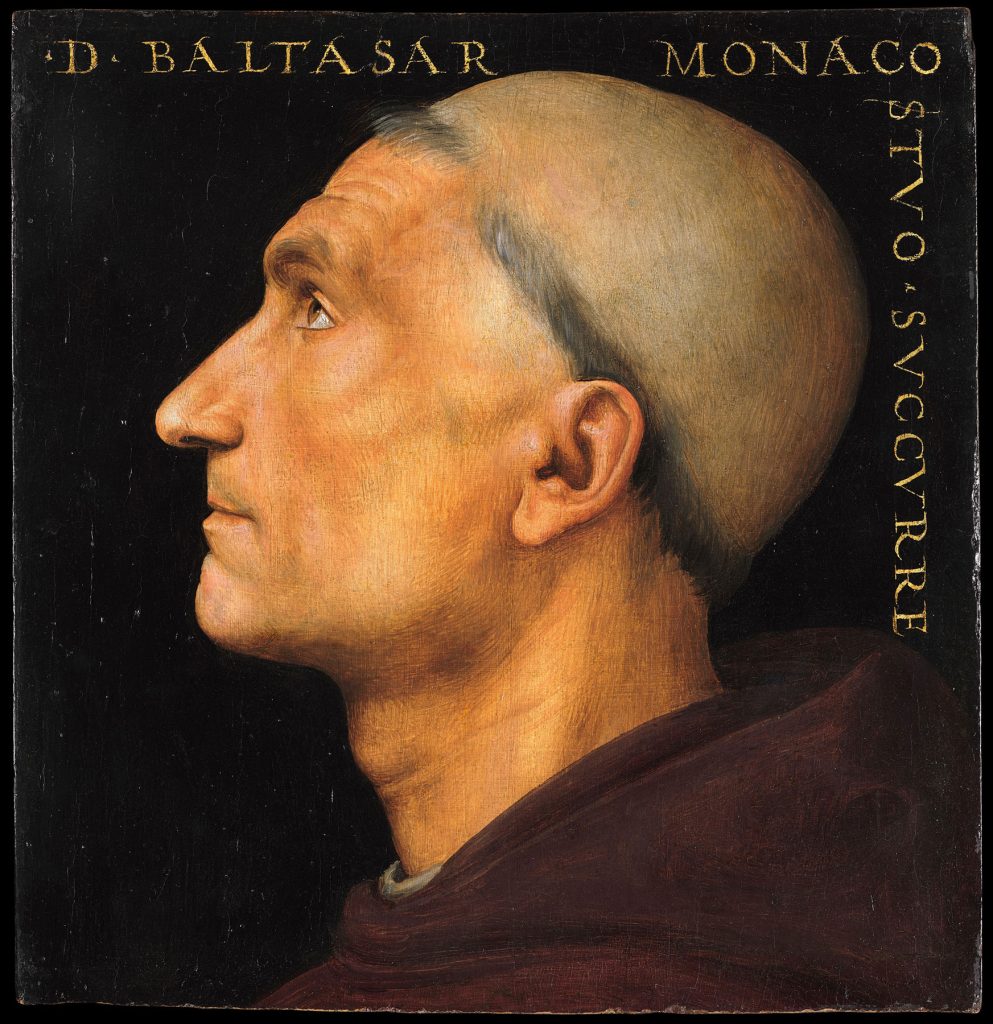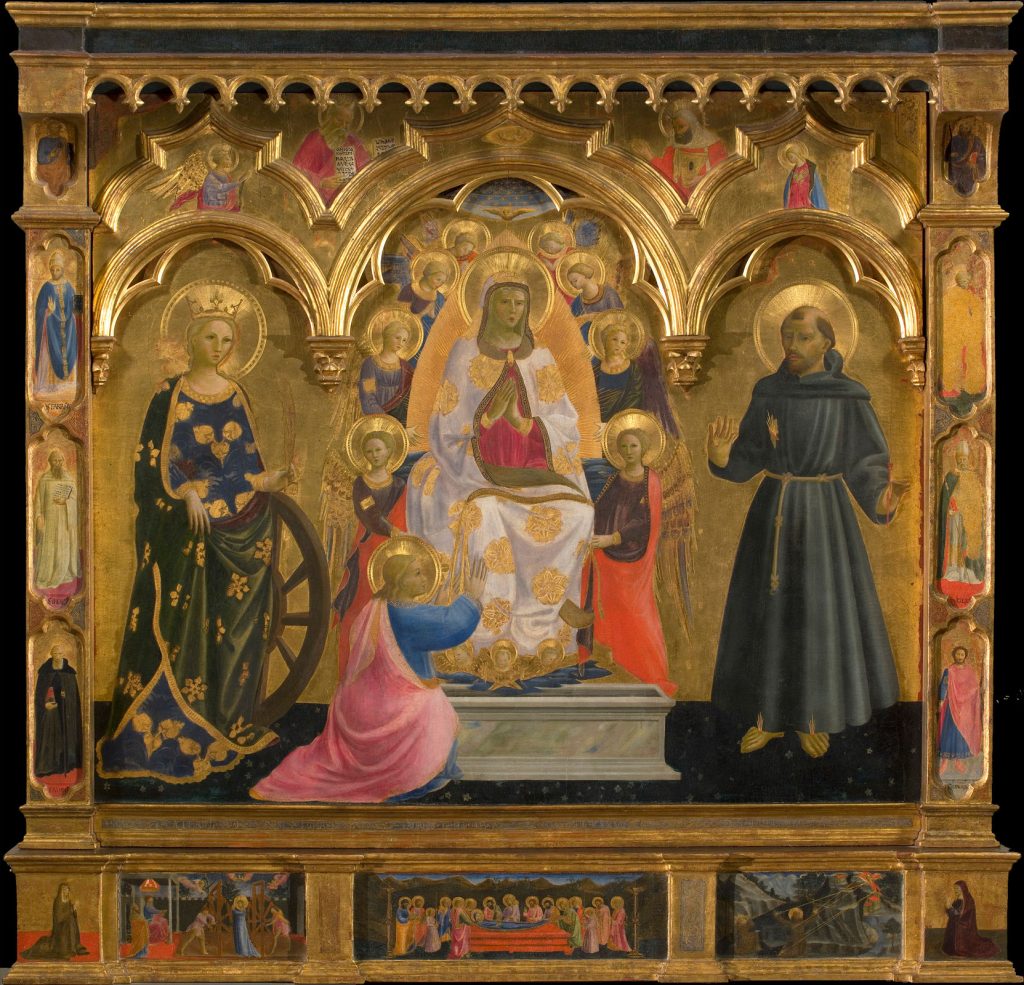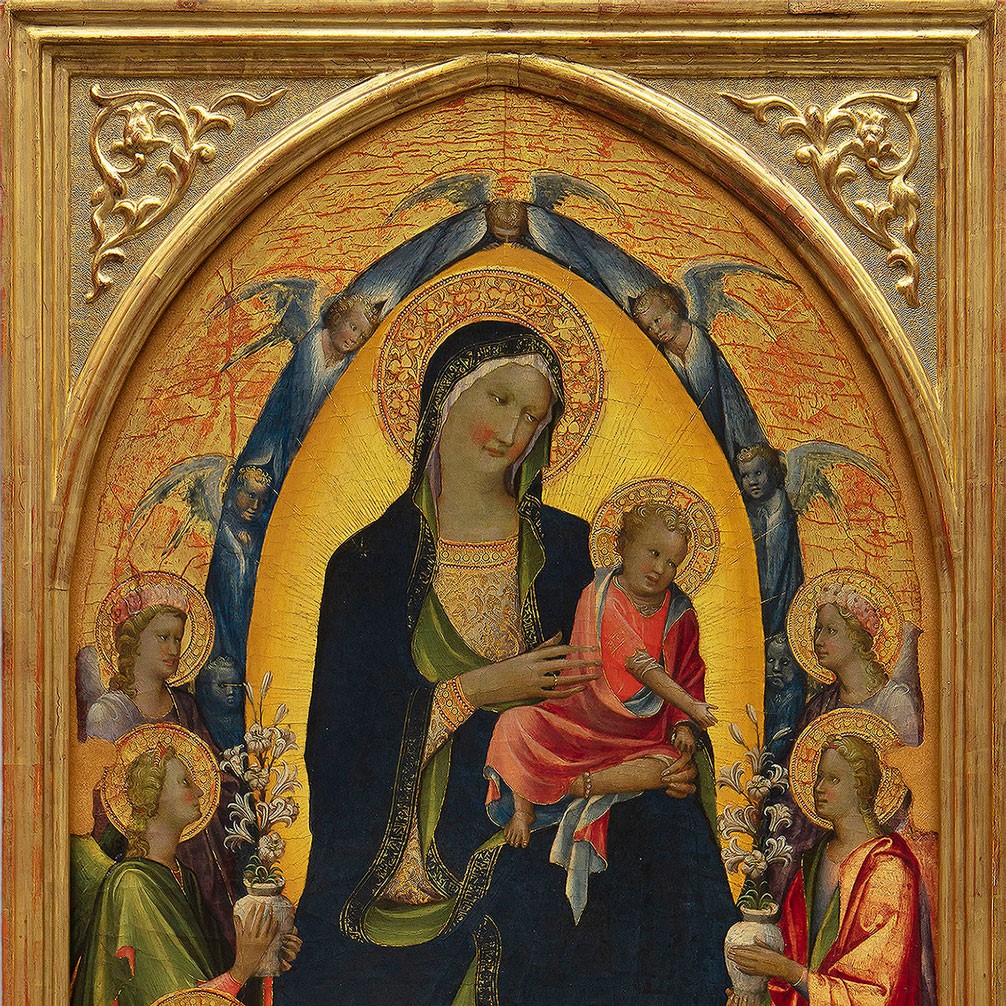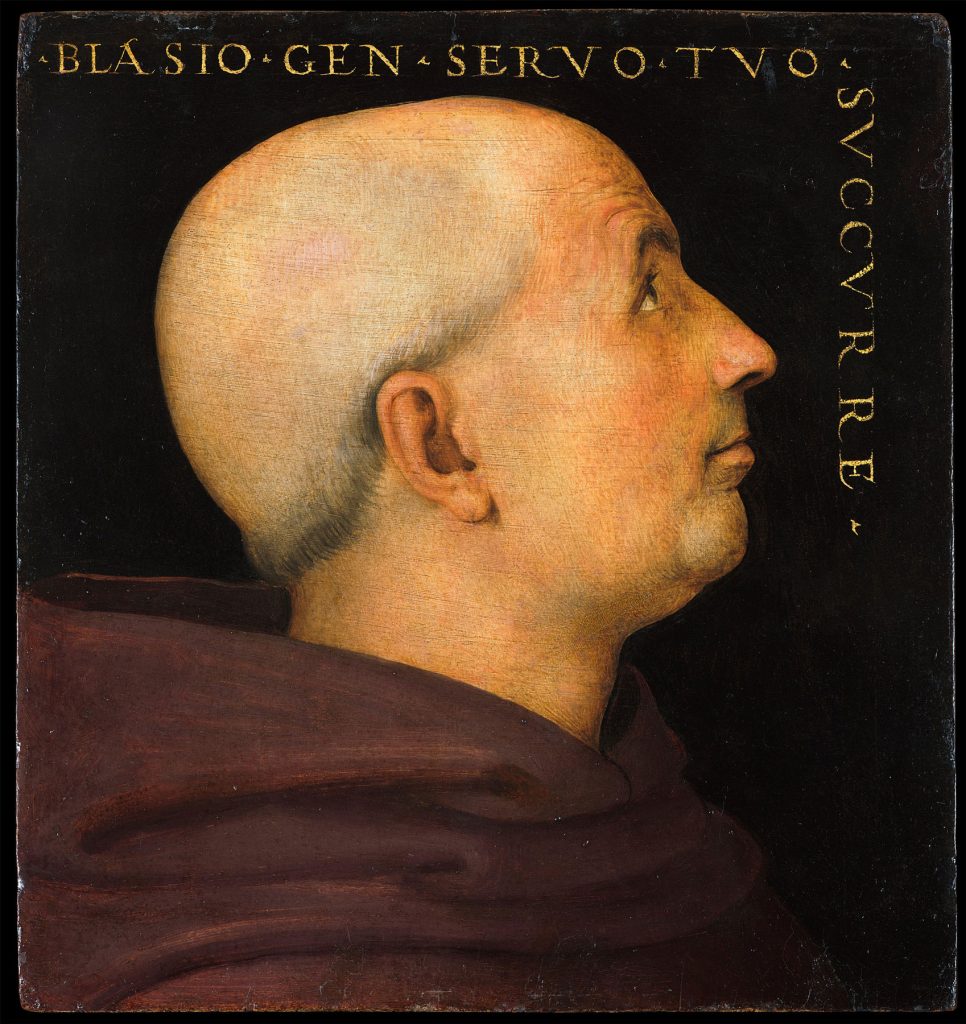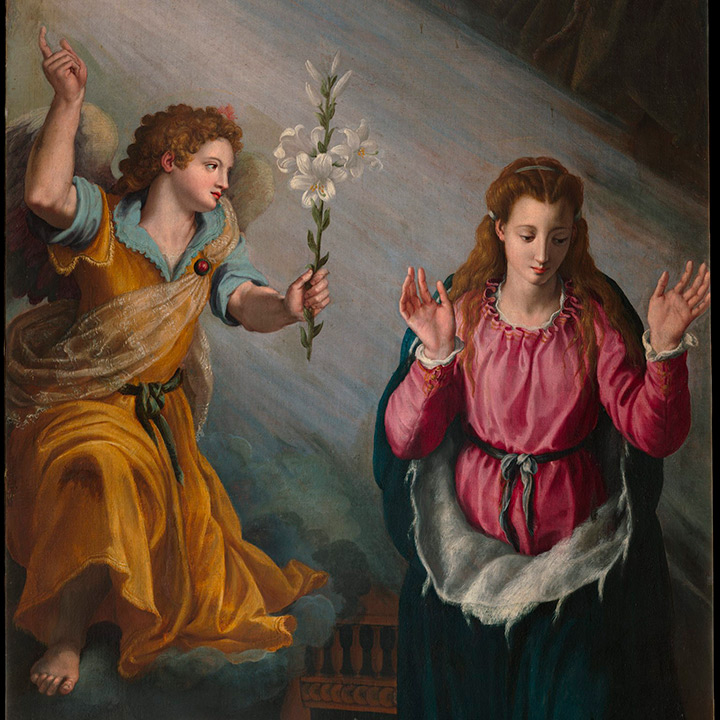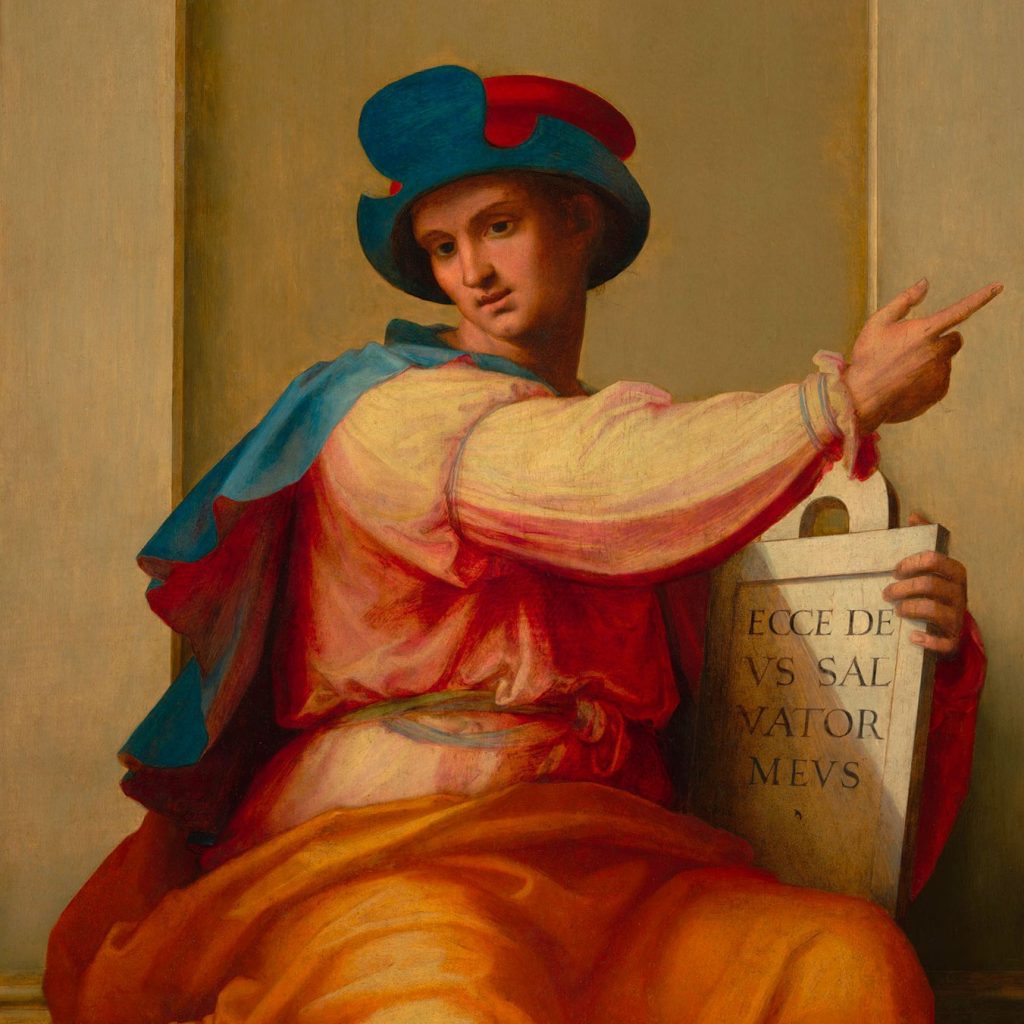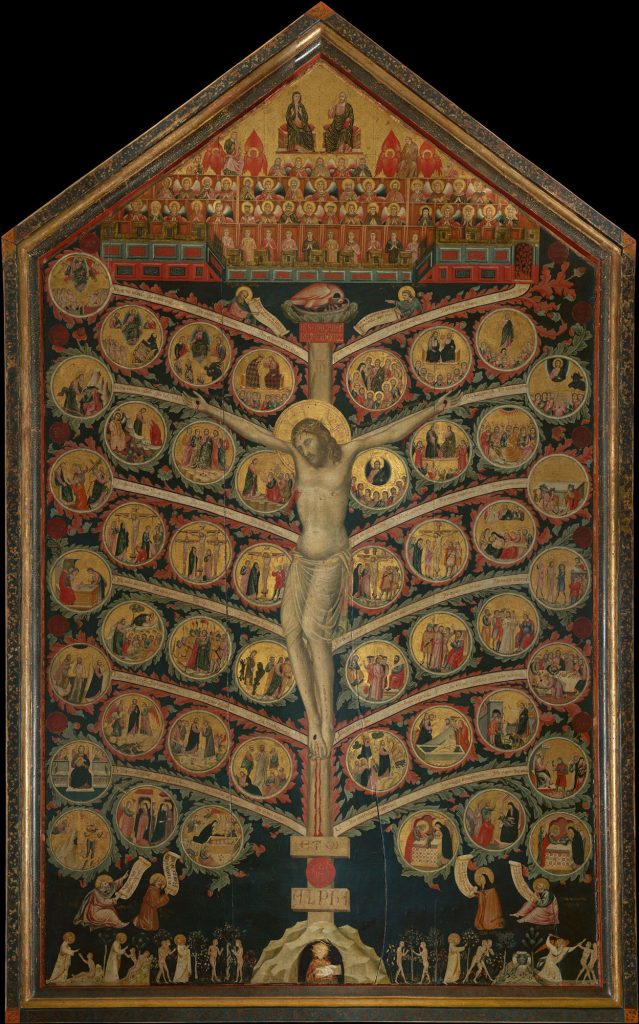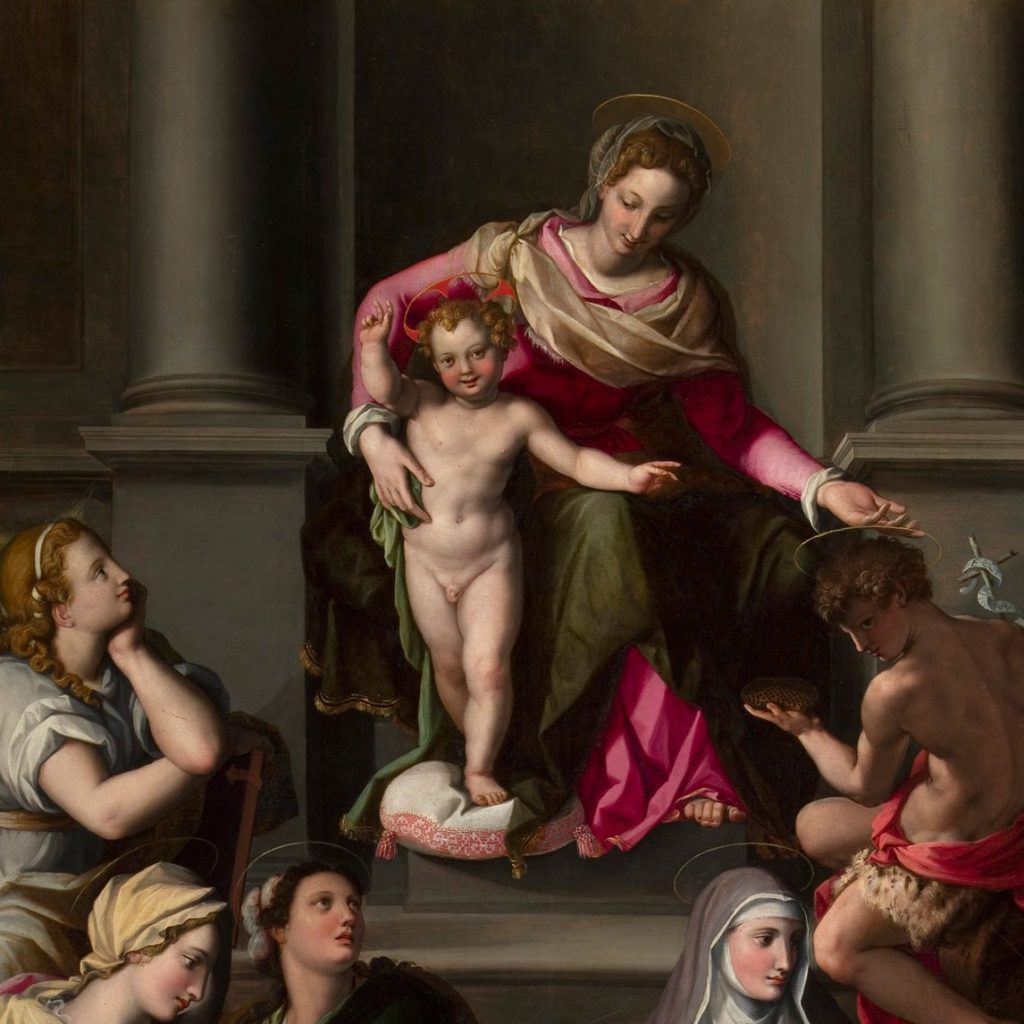Disputation on the Immaculate Conception
Carlo Portelli
Documented in Florence 1533 – 1574
PAINTING
Data sheet
- Author: Carlo Portelli
- Date: 1566
- Collection: PAINTING
- Technique: Oil on wood panel
- Dimensions: 415x247 cm (with frame)
- Inventory: Inv. 1890 n. 4630
Artwork
The work depicts an allegory of the dogma of the Immaculate Conception. The composition revolves around the central axis where God the Father is shown above, pointing to the Virgin of the Mystic Lamb, symbol of Christ’s sacrifice. Mary stands on the tree of good and evil and crushes the serpent with her foot. Immediately below, Eve is depicted naked and from behind, indicating to the viewer the sad fate of Adam with his work implement. The Virgin is therefore the new Eve, who redeems humanity from the original sin of the two progenitors. This interpretation is also validated by the Apocalypse passage written in Greek on the scroll of the Mystic Lamb, by the inscriptions in Hebrew on the books of Kings David and Solomon (taken from the Psalms and from the Song of Songs, respectively), and by the prophecies in Latin on the scrolls of the Persian and Libyan Sibyls.
The altarpiece was intended for the altar of the Immaculate Conception in the Franciscan Church of San Salvatore di Ognissanti in Florence, founded by Orlando Tapìa, a Spaniard in the retinue of Eleanor of Toledo. The Grand Duchess contributed significantly to the spread of the dogma of the Immaculate Conception in Tuscany, which was strongly supported by the Franciscan order and by the Spanish court, although not formalised by the Church at that time.
The painting bears the signature of the artist Carlo Portelli and the date 1566. It displays the typical features of this mannerist painter: the elongated figures, the studied contrasts, the balanced counterpoint of colours. What captivates the attention is Eve’s pure form, whose nudity, deemed inappropriate, sparked fervent criticism as early as the 16th century, leading to the removal of the altarpiece from its altar in 1671 and the addition of a fur coat to cover the figure, which was removed during the latest restoration.
